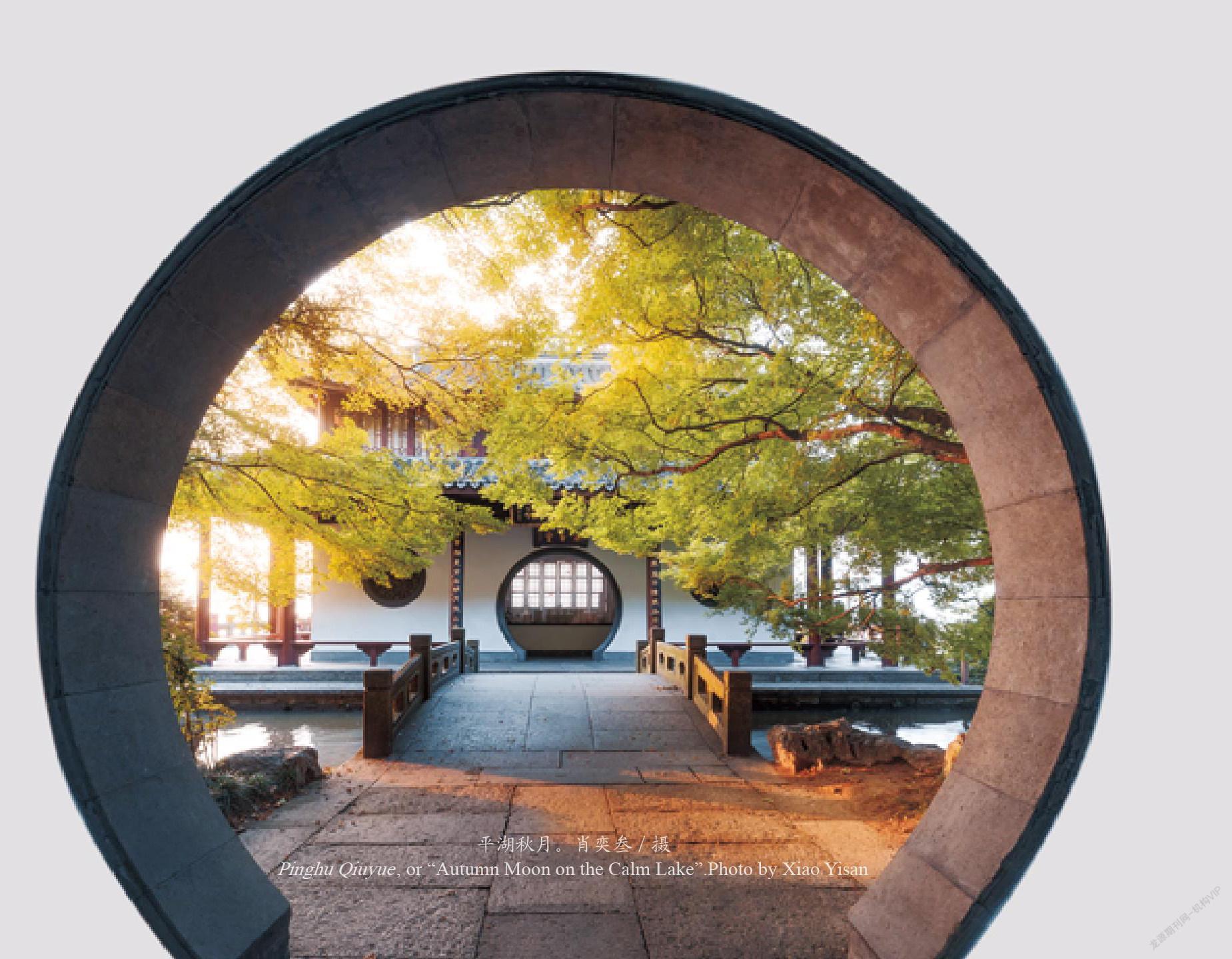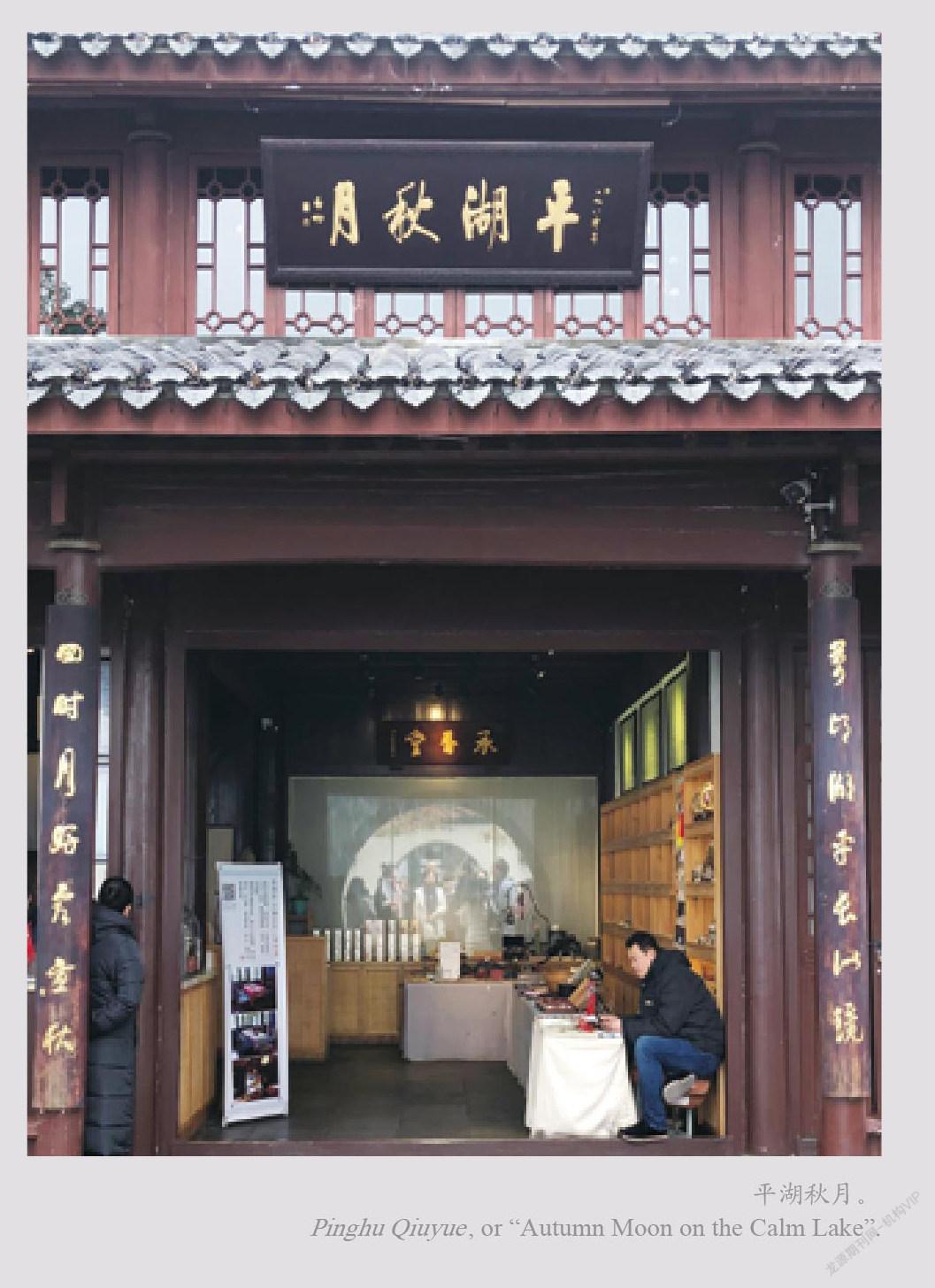宋代平湖秋月在哪里?
2021-12-08司马一民
司马一民



中秋节与春节是中国人最看重的传统节日。
中秋节赏月的风俗,在《唐书 · 太宗记》有记载:“八月十五中秋节。”在唐代,中秋赏月、玩月颇为盛行,许多诗人的名篇中都有咏月的诗句,中秋节开始成为固定的节日。
唐代张祜(785年—849年),字承吉,清河人,出身富豪之家,有诗名,其《中秋夜杭州玩月》诗描述了在杭州的文人雅士中秋赏月的情形:万古太阴精,中秋海上生。鬼愁缘辟照,人爱为高明。历历华星远,霏霏薄晕萦。影流江不尽,轮曳谷无声。似镜当楼晓,如珠出浦盈。岸沙全借白,山木半含清。小槛循环看,长堤蹋阵行。殷勤未归客,烟水夜来情。
北宋时中秋节出现“小饼如嚼月,中有酥和饴”的节令食品。孟元老《东京梦华录》载:中秋夜,贵家结饰台榭,民间争占酒楼玩月;弦重鼎沸,近内延居民,深夜逢闻笙竽之声,宛如云外,间里儿童,连宵婚戏;夜市骈阗,至于通晓。
南宋时杭州人怎样过中秋?
《梦粱录》卷四《中秋》载:此夜月色倍明于常时,又谓之“月夕”。此际金风荐爽,玉露生凉,丹桂香飘,银蟾光满。王孙公子,富家巨室,莫不登危楼,临轩玩月,或开广榭,玳筵罗列,琴瑟铿锵,酌酒髙歌,以卜竟夕之欢。至如铺席之家,亦登小小月台,安排家宴,团圆子女,以酬佳节。虽陋巷贫窭之人,解衣市酒,勉强迎欢,不肯虚度。此夜天街买卖,直至五鼓。玩月游人,婆娑於市,至晓不绝。盖金吾不禁故也。
这段文字大意为,中秋节那天,月色要比平常明亮很多,这天晚上又称作“月夕”。豪门之家大摆盛宴,丝竹歌舞,开怀畅饮。住在陋巷里的穷人即使把衣服当了换酒喝也要过节。京城中街道买卖彻夜不停,一直到天亮。赏月的游人直到天亮了也没有散尽,这一天晚上是不宵禁的。
《武林旧事》卷三“中秋”的记载也差不多:禁中是夕有赏月延桂排当,如倚桂阁、秋晖堂、碧岑,皆临时取旨,夜深天乐直彻人间。御街如绒线、蜜箭、香铺,皆铺设货物,夸多竞好,谓之“歇眼”。灯烛华灿,竟夕乃止。
稍稍不同的是《西湖老人繁胜录》中秋日所载:是夜城中多赏月排会,天气热,宿湖饮酒,待银蟾出海,到夜深船静,如在广寒宫。
可见中秋赏月最佳处在西湖之中,这与古人在杭州留下的中秋赏月诗词倒可以印证——
王洧,宋理宗时人,写有《平湖秋月》诗:万顷寒光一夕铺,水轮行处片云无。鹫峰遥度西风冷,桂子纷纷点玉壶。
中秋之夜,天上万里无云,月朗星稀,月光铺洒在西湖水面上;凉风徐徐,带来了桂花的芳香。全诗突出了一个“静”字。
孙锐,吴江平望人,度宗咸淳年间进士,写有《平湖望月》诗:月冷寒泉凝不流,棹歌何处泛归舟?白苹红蓼西风里,一色湖光万顷秋。
诗题“平湖望月”,有“举头望明月,低头思故乡”之意。水生植物白苹红蓼,颜色一深一浅,相依在水中,可以想象为相恋的意思。也许此时诗人没有和家人在一起,此诗表达了怀念故乡思念亲人的意思。
陈允平(字君衡,号西麓,宋末元初人)写有《秋霁(西湖十咏 · 平湖秋月)》:千顷玻璃,远送目斜阳,渐下林阗。题叶人归,采菱舟散,望中水天一色。碾空桂魄。玉绳低转云无迹。有素鸥,闲伴夜深,呼棹过环碧。 相思万里,顿隔婵媛,几回琼台,同驻鸾翼。对西风、凭谁问取,人间那得有今夕,应笑广寒宫殿窄。露冷烟淡,还看数点残星,两行新雁,倚楼横笛。
诗人对中秋之夜的西湖非常欣赏,在一番场景描述之后,赞叹西湖胜过月亮上嫦娥居住的广寒宫:“人间那得有今夕。应笑广寒宫殿窄。”
尹廷高,宋末元初人,写有《平湖秋月》诗:烂银盘挂六桥东,色贯玻璃彻底空。千顷清光无着处,夜深分付与渔翁。
诗人感叹,夜深人静,月色如银光映入浩瀚透明的西湖水中,只是这样美丽的景色只有打鱼人在享受。也许诗人看到的是宋末元初特殊时期的西湖中秋之夜,特别冷清。
明代马洪,字浩澜,号鹤窗,仁和县人,有《南乡子 · 平湖秋月》词:月似白莲浮,水似璚田绿水流。闲忆何时曾胜赏,中秋,一瓣芙蓉是彩舟。风露冷飕飕,水月仙人跨玉虬。笑道西湖元有对,瀛洲,却在蓬莱欲尽头。
“闲忆何时曾胜赏,中秋”,诗人似乎在回忆曾经在西湖过中秋的情形。以婉约的词风写杭州西湖中秋,倒也贴切。
明代徐渭也写过一首《平湖秋月》诗:平湖一色万顷秋,湖光渺渺水长流。秋月圆圆世间少,月好四时最宜秋。
这是一首藏头诗,每句的第一个字合起来为“平湖秋月”,有趣。
有意思的是上述引用的诗词,题目是“平湖秋月”和“平湖望月”,说明杭州文人雅士比较喜欢在水平如镜的西湖赏月。那么,作为西湖十景之一,“平湖秋月”到底在哪里?其实,南宋时平湖秋月似乎并无固定的景点,单从詩词中寻找依据来看,当时以及元、明两代文人赋咏此景的描述多为泛归舟夜湖,舟中赏月之内容。明万历年间的西湖十景木刻版画中,《平湖秋月》一图也表现为游客在湖船中举头望月。
现如今的平湖秋月景点位于白堤西端,背倚孤山,面临外湖。因清康熙三十八年,康熙帝南巡,在杭州此处御书“平湖秋月”,从此,景点固定,立碑湖畔。
(作者系杭州市政协智库专家、文史专家)
In Search ofPinghu Qiuyue, or “Autumn Moon on the Calm Lake”
By Sima Yimin
Together with the Spring Festival, the Mid-Autumn Festival is perhaps regarded as the important festival by the Chinese people. The tradition of appreciating the moon during the Mid-Autumn Festival was already recorded in the Book of Tang or the History of Tang. In the Tang dynasty (618-907), appreciation of the moon on the Mid-Autumn Day was quite popular, especially among poets and literati. Indeed, many famous lines of Tang poetry were about the moon, and it is during the period that the Mid-Autumn Day gradually developed into a commonly celebrated festival.
Zhang Hu (785-849), a Tang poet, described how literati appreciated the moon during the Mid-Autumn Festival in his poem Enjoying the Moon in Hangzhou on the Night of Mid-Autumn Day: …Over the balustrade they watch the moon again and again, or in groups they walk along the causeway. Return home they will not, for with fog and water, passion and love arrive late at night.
In the Northern Song (960-1127) period, people began to celebrate the Mid-Autumn Festival with special foods, and “small crisp and sugary cakes like the moon” appeared. Dongjing Menghua Lu, or The Eastern Capital: A Dream of Splendor, a book published at the end of the Northern Song that recorded in detail the life of Kaifang (the East Capital), the Northern Song capital, said that on the night of the festival, “rich families decorate their houses and pavilions while common folks throng to restaurants and taverns to watch the moon; music blaring across places can even be heard in the imperial court…children frolic and romp late into night and crowded night markets stay open until daytime.”
How did people in the Southern Song dynasty (1127-1279) spend the day?
Mengliang Lu, or Dreaming Over a Bowl of Millet, a book written at the end of the Southern Song describing the capital Linan (present-day Hangzhou), capital of the Southern Song dynasty, wrote, “the moon shines twice brighter on this night than usual…Wealthy families put on feasts for the occasion, and drink merrily to all sorts of music and dancing...and those who are much poorer would rather pawn their clothes for some wine to celebrate the festival. On this night, shops and businesses in the capital stay open all night. Visitors appreciating the moon wont disperse until in the morning. And on this night, no curfew is imposed.”
Similar accounts appeared in Wulin Jiushi, or Ancient Matters from Wulin Garden, yet another book about the happenings of Linan published about the same time as Mengliang Lu: on the night of the festival, special stalls would be set up in the imperial court to enjoy the moon…music plays deep into the night. Shops in the imperial street sell various goods catered to the day, such as preserved fruit, incense and candles…Lights burn all night until daybreak.
A little different description can be found in Xihu Laoren Fansheng Lu (or the Records from the Old Man of West Lake on Linans Prosperous Life): in the city, parties would be held for the appreciation of the moon on the night, which is usually hot; many would stay around the lake and drink, waiting for the moon to rise above the water, when they would sail into the lake, as if in the legendary Moon Palace.
Apparently, the best location to enjoy the moon on the Mid-Autumn Day is on the West Lake, which has been borne out by quite a few poems.
Wang Wei, a Southern Song poet, had a poem titled “Pinghu Qiuyue” (“Autumn Moon on the Calm Lake”): Cold light covers ten thousand acres sky at night, whence travels the moon as not a wisp of cloud is to be seen.
Chen Yunping, another Southern Song poet, composed a Ci poem with a similar title (“To the Tune of Qiuji: Ten Arias on the West Lake — Autumn Moon on the Calm Lake”), in which he lauded the moon, “…What a night this vast mortal world is endowed with. We should all laugh at the cramped Moon Palace...”
Ming (1368-1644) poets had a penchant for Pinghu Qiuyue as well. Xu Wei (1521-1593), famed poet, essayist, calligrapher and painter, penned a poem of the same title. What is remarkable that it is an acrostic poem: the first character of each line spells out the title “Ping (Calm) Hu (Lake) Qiu (Autumn) Yue (Moon)”: Calm lake reflects ten thousand acres autumn in a single color, lake light seems endless as water flows. Autumn moon perfectly round is rarely seen in this world, moon in its best state surely comes in autumn.
As one of the Ten Best-Known Sceneries of the West Lake, where exactly is Pinghu Qiuyue, or “Autumn Moon on the Calm Lake”? In fact, there was not a single and settled spot for the scenery during the Southern Song, which could be readily discerned from the poetry of Yuan and Ming poets, as they were invariably traveling in a boat on the West Lake to enjoy the moon and the scenery. In the woodcut print version of the Ten Best-Known Sceneries of the West Lake made during the Wanli period of the Ming dynasty, the part of Pinghu Qiuyue or “Autumn Moon on the Calm Lake” also shows that visitors look up at the moon in a boat on the lake.
Now, the scenic spot is located to the west of the Bai Causeway, facing the lake and with the Solitary Hill at the back. It was thanks to Emperor Kangxi (1654-1722) that the spot became a fixed tourist attraction: in 1689, the 38th year of his reign, Emperor Kangxi came to the spot during one of his southern tours, and wrote down the four characters Ping Hu Qiu Yue. A stone tablet was the set up and “Autumn Moon on the Calm Lake” has turned into what it is today.
